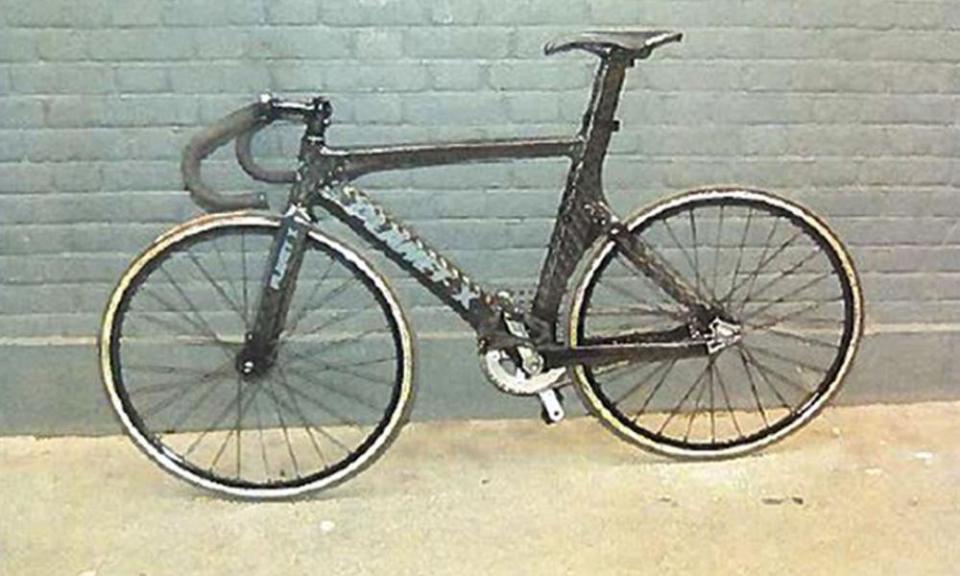Motorist would not have landed cyclist's 'wanton and furious driving' charge

A heavy-handed prosecution against a cyclist for manslaughter has failed but a charge of “wanton and furious driving” has succeeded.
In 2016 more than 400 pedestrians were killed on UK roads. Each a terrible tragedy to those involved and almost all avoidable. One of these casualties, Kim Briggs, died after a collision between herself and a teenage cyclist, Charlie Alliston.
She was extraordinarily unfortunate. Research indicates that 10% of pedestrians struck by a motor vehicle at 20mph are killed. A rider on a lightweight bike will have less than one 10th the mass and therefore kinetic energy and momentum of an average car, and the speed of impact was said by the prosecution to be “up to 14mph”.
Yet tragically the unsuccessful efforts of Briggs and Alliston to avoid each other led to her death from a brain injury. This is a very rare occurrence and has received much publicity. We are inured to the 400 or so pedestrian deaths linked to motorised traffic but not to the vanishingly rare occasions that are linked to bicycles.
It is no coincidence that the one death of a pedestrian involving a cyclist is the one case where a manslaughter charge has followed. This is reported to be a first. It is also one of the few cases where wanton and furious driving has been charged. These are both offences triable only in the crown court and were no doubt selected in preference to summary offences (triable by magistrates) due to the perceived seriousness of the offending and its consequences.
Alliston could have been charged with one or more of the lesser offences of breaching the Construction and Use Regulations, of dangerous cycling or of careless cycling. Prosecutors appear to have wished to get around the fact that parliament has not legislated for causing death by careless or dangerous cycling offences.

The allegation against Alliston essentially related to the absence of a front brake on his bicycle. From reports of the evidence given at trial, it seems clear that Briggs stepped out on to the road into the path of Alliston. Alliston has always been adamant this was so (including in some very poorly judged online forum comments he made in the days after the incident when Briggs lay in hospital) and the prosecution, who had access to CCTV and witnesses, did not contend otherwise. Instead it was alleged that with a front brake Alliston would have been able to stop before any collision took place.
The bicycle concerned was designed and built for use on the track. Track bicycles do not have gears or a free wheel. If the rear wheel is spinning then so are the pedals and any attached legs. They also, for sound safety reasons on the track, do not have front brakes. Braking on a track bicycle is achieved by resisting the spinning of the back wheel with the legs. Fixed rear wheels (or “fixies”) are not confined to the track, they are increasingly used on the road though the road variant differs from the track bike in having a front brake.
The requirement for a front brake is set out in The Pedal Cycle (Construction and Use) Regulations 1983. Regulation 7(1) provides that every bicycle must be equipped with at least one braking system. Alliston’s bicycle satisfied this test. However because his saddle was more than 635mm from the ground, Alliston was also required by Regulation 7(b) to have “a braking system operating on the front wheel”. He had no such front wheel brake and could have been prosecuted for a breach of this regulation, a summary offence resulting in a fine.
Front brakes are important on bicycles. In an emergency, a skilled cyclist will get all their stopping force from the front brake because of the effect of the bicycle and rider decelerating. Unlike a car, or a heavy police-issue mountain bike, the limit of effective braking on dry level ground is reached at the point where the rear wheel lifts off the ground potentially pitching the rider over the handlebars.
Studies in David Wilson’s seminal work Bicycling Science demonstrate that a deceleration of 0.5g is the maximum that a seated rider can risk before he goes over the handlebars. Unlike a car driver, a cyclist cannot safely achieve the limit of adhesion of the tyre to the road, which in the dry is typically about 0.8g. Braking with the rear wheel alone can achieve only 0.256g before the rear wheel locks up and skids. Wilson also cites reliable research that in wet weather conventional block-on-rim braking distances are increased by a factor of four.
Expert evidence from the police for the prosecution was that Alliston had been going at 18mph (8 m/s) and that his braking distance was 12 metres. From experiments on other bicycles, including a police mountain bike, it was alleged that with a front brake he would have been able to stop in 3 metres. In cross-examination, it was suggested to him that with a “butcher’s bike” with good brakes, he could have avoided the collision.
There is no record that Alliston had his own expert to give evidence, or that the risk of tipping over the handlebars was considered. The 3 metre braking distance is frankly absurd. Newtonian physics using Wilson’s calculated 0.5g yields 6.5 metres with the front brake and 13 metres without it. The difference is a factor or two, not four.
Given that the prosecution case was that Alliston was 6.53 metres away when Briggs stepped out, this difference is crucial. The Highway Code gives a typical stopping distance of 12 metres for a car driving at 20mph, suggesting that if Briggs had stepped into the path of a “slow” moving car, the driver would not have been able to avoid her. Like a driver, Alliston has to be given some reaction and thinking time. He shouted twice and gave evidence that he moved to pass behind her when she stepped backwards. Any cyclist will confirm that quick steering may be preferable to emergency braking when avoiding a pedestrian.
Of course, Alliston should have had a front brake. He was unaware of the legal requirement for one and thought himself reasonably safe relying on rear braking. He was wrong and deserves punishment for that offence. Manslaughter though requires either gross negligence or that the defendant committed an offence that was dangerous and caused death.

Dangerous has been taken, at least in a road traffic context, restrictively. For example motorists whose speeding or failure to give way causes a fatal collision are far more likely to face charges of causing death by careless driving than they are manslaughter charges. The risk Alliston presented to a pedestrian stepping out in front of him was no greater than that presented by a car doing 20mph and his braking distance remained half that of a fully equipped road bike in the wet. Presumably nobody suggests it is dangerous to ride in wet conditions.
Alliston’s dreadful post collision comments reveal that he was far too reliant upon other road users doing the right thing and that he should have been prepared to react to pedestrians moving in any direction. Nonetheless the evidence gives rise to a significant possibility that he was reacting as best he could “in the agony of the moment” in circumstances where charges would be unlikely against a motorist.
The charge of “wanton and furious” driving is also puzzling. Although the archaic 1861 wording could encompass more, it generally relates to speed. Reports of the prosecution’s closing speech reveal this case to be no exception with reference to a “machine built for speed” (apparently said without irony given what else is on our streets). This may have been glossed with the rather circular argument that the speed was too high for a bicycle with no front brake.
On any objective view, 18mph is a cautious speed and on a busy London street matching the speed of other traffic, rather than going much slower, is a wise precaution. Any suggestion that it is too fast applies a peculiar double standard and would potentially criminalise many riders. Alliston was cross examined about his lack of a safety helmet and his penchant for certain stunt riders which were said to demonstrate some unacceptable risk-taking attitude. However, notwithstanding the proliferation of CCTV throughout London, the prosecution had found not a jot of evidence that Alliston’s riding resembled that in an “alley cat” movie.
None of this has any bearing, beyond the purely prejudicial, to a young man travelling at 18mph down a busy London road. Some press reports were full of language (“ploughed into” etc) that is seldom seen when a car driver (or as was being dealt with in a nearby court, a speeding motorcycle rider) runs down a pedestrian.
Alliston may not have revealed himself to be a very attractive character and no one can fail to feel anguish about the terrible waste of yet another life. However there is a lot about the bringing of charges at this level, and the conviction for wanton and furious cycling, to cause substantial disquiet notwithstanding Alliston’s acquittal on the manslaughter charge.
If it is going to make any meaningful contribution to the reduction of danger on the roads, our criminal justice system needs to recalibrate away from the prejudice that motoring is innocuous and cycling dangerous and towards controlling the behaviour of those imposing greatest risk.

 Yahoo News
Yahoo News 
